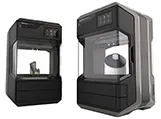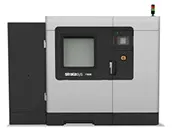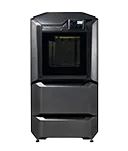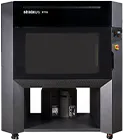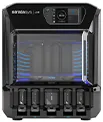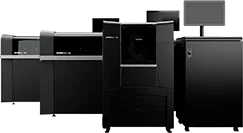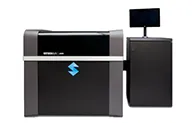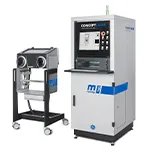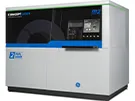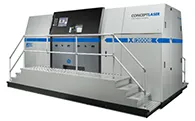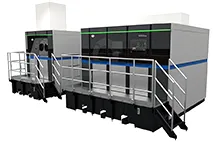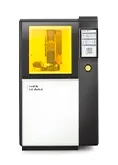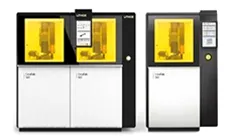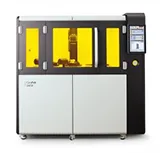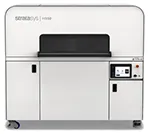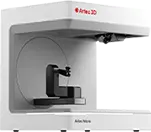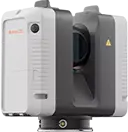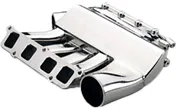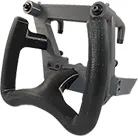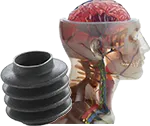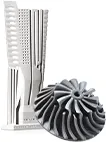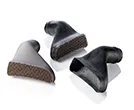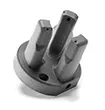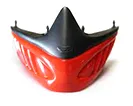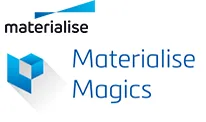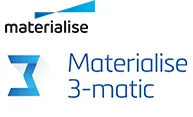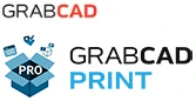In today’s environmentally conscious world, businesses seek innovative ways to reduce their carbon footprint by employing eco-friendly practices and manufacturing processes. In response to these growing demands, 3D printing technology has emerged as a groundbreaking solution that enables companies to create sustainable packaging solutions while maintaining efficiency and cost-effectiveness.
By offering market-leading Stratasys, GE Additive, Lithoz, and Artec 3D Printer and 3D Scanner Solutions, Objective3D is playing an integral role in shaping the future of sustainable packaging, contributing to a greener and more environmentally responsible era of production. In this blog, we will delve into the exciting world of 3D-printed sustainable packaging and demonstrate how Objective3D’s solutions drive innovation in the industry.
The rapidly growing focus on sustainability and green initiatives has increasingly emphasised developing eco-friendly packaging solutions. Traditional manufacturing methods for product packaging often consume large quantities of materials, usually sourced from non-renewable resources. Moreover, these conventional methods produce significant waste, further straining our planet’s resources and contributing to pollution and environmental degradation.
Enter 3D printing – a technology with the potential to significantly reduce waste and the consumption of non-renewable resources while bolstering sustainable packaging production. Using additive manufacturing, companies can design new packaging solutions from the ground up, taking advantage of more sustainable materials, such as biodegradable polymers or plant-based plastics. This innovative approach to production not only minimises waste by only using necessary materials, but it also enables the creation of lightweight, durable packaging options that maintain product integrity without causing harm to the environment.
As a leading provider of 3D Printing and 3D Scanning Solutions in Australia and New Zealand, Objective3D offers the products, services, and expertise needed to explore and capitalise on the many advantages of 3D-printed sustainable packaging. By harnessing the power of cutting-edge technology and placing a strong focus on sustainability, Objective3D is paving the way towards a more environmentally conscious future, benefiting businesses and our planet alike.
Enhancing Packaging Efficiency with Innovative Designs
One of the most significant advantages of 3D printing technology in the realm of packaging is the freedom it provides for creative and innovative design exploration. Unlike traditional manufacturing methods, which often impose limitations in terms of material usage and complex geometries, 3D printing allows designers to reimagine conventional packaging concepts and develop new solutions that prioritise sustainability, product protection, and consumer experience.
By leveraging the flexibility of 3D printing technology, companies can create customised packaging designs that maximise space and functionality while reducing material usage. These bespoke, lightweight designs help eliminate packaging waste and minimise transportation costs, ultimately contributing to a reduction in overall environmental impact. Moreover, the flexibility of 3D printing technology enables designers to easily iterate and modify their designs, creating numerous prototypes before finalising the perfect sustainable packaging solution.
Adopting Biodegradable and Environmentally-Friendly Materials
One of the key factors driving the development of sustainable packaging solutions is the increased availability and adoption of biodegradable and environmentally-friendly materials. 3D printing technology has advanced significantly in recent years, with an expanding range of print materials now accessible to meet various sustainability requirements.
Some of the most promising materials used in 3D printing for sustainable packaging include biopolymers, such as polylactic acid (PLA) and polyhydroxyalkanoates (PHA), which are derived from renewable resources, such as cornstarch or sugar cane. These biodegradable materials break down over time, minimising their impact on landfills and reducing the burden on our planet’s finite resources. Additionally, other eco-friendly materials, such as algae-based or recycled plastic filaments, are also gaining popularity in the field of 3D-printed packaging, as they offer alternative solutions that combine both durability and environmental responsibility.
Reducing Manufacturing Waste with Additive Processes
One of the most compelling reasons for adopting 3D printing technology in the packaging industry is its inherent ability to reduce manufacturing waste and streamline production processes. Additive manufacturing enables the creation of packaging components by depositing material layer by layer, constructing the final product with minimal waste. This stands in stark contrast to traditional subtractive manufacturing methods, which often entail material removal, resulting in the production of significant quantities of waste.
By implementing 3D printing technology, companies can significantly utilise materials more efficiently, reducing both costs and the environmental impact of packaging production. Furthermore, the streamlined production process that accompanies 3D printing technology allows for faster and more responsive manufacturing, boosting the overall efficiency of packaging operations.
Encouraging a Circular Economy Through 3D Printing
Beyond the direct impact on sustainable packaging design and production, 3D printing technology also holds the potential to stimulate the adoption of a circular economy within the packaging sector. By rethinking material usage and prioritising resource efficiency, businesses can introduce circular practices that maximise the value obtained from materials and minimise waste generation.
3D printing technology contributes to the circular economy concept by allowing for the potential use of recycled materials, extending their lifespan, and realising their full value. Materials such as PET bottles or other types of reclaimed plastics can be repurposed and transformed into 3D printing filaments, which can then be used in the production of new packaging components. This closed-loop system highlights the importance of material innovation and 3D printing technology in fostering a more circular and environmentally conscious economy.
Conclusion:
As businesses across the globe strive to become more eco-friendly and reduce their impact on the environment, the adoption of 3D printing technology has emerged as a critical enabler of sustainable packaging development.
Objective3D, as a leading provider of 3D Printer and 3D Scanner Solutions in Australia and New Zealand, is at the forefront of this evolving landscape, empowering businesses to innovate and create more efficient, eco-friendly packaging solutions that align with both consumer demands and environmental responsibility.
By harnessing the power of 3D printing in Sydney to develop innovative designs, adopt eco-friendly materials, reduce manufacturing waste, and encourage a circular economy, Objective3D is contributing to the realisation of a more sustainable future.
Partnering with Objective3D and embracing their cutting-edge solutions paves the way for businesses to embark on an environmentally responsible journey, one sustainable packaging solution at a time.






